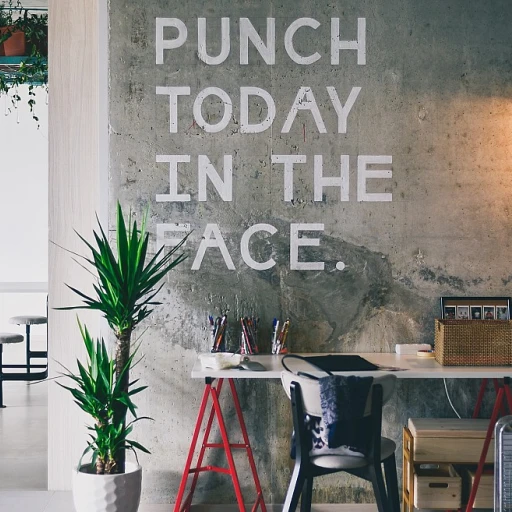
Understanding the Role of Client Intake Forms
Understanding the Importance of Intake Forms in Client Onboarding
The role of client intake forms in the onboarding process cannot be overstated. These forms serve as the foundational step in understanding and identifying the specific needs of a new client. In various industries, such as real estate, mental health, and accounting firms, an effective client intake form acts as a vital tool in streamlining the onboarding process.
For a business, creating a comprehensive intake form is essential to capture critical data and details about the clients' projects or services they require. Utilizing both online intake forms and traditional options like PDF or Microsoft Word can help accommodate different preferences and ensure no stone is left unturned during the initial phase. An intake process that leverages these forms not only facilitates seamless onboarding but also saves time for both the provider and the client.
- Enhanced Communication: A well-designed intake form promotes clear communication by covering essential questions that help in aligning services to client expectations.
- Efficient Data Collection: Doing it right from the start means gathering accurate data that prevents any service delivery hiccups down the line. With form templates tailored to specific business needs, the intake procedure becomes less cumbersome and more efficient.
- Simplified Processes: When forms are straightforward and easy to complete, clients can provide their information quickly, enhancing the user experience and helping you focus on providing quality service.
Whether it's through a client portal or downloadable form templates, the goal is to create client intake methods that are intuitive and user-friendly. This phase sets the tone for the entire client relationship, emphasizing the importance of getting it right from the outset. For more insights on how teller cash recyclers can improve service efficiency, check out this article on onboarding experience.
Key Elements of an Effective Client Intake Form
Essential Components for a Strong Client Intake Form
Creating an effective client intake form is a critical step in refining the onboarding process. These forms serve as the first touchpoint with your clients and the opportunity to collect vital information needed to provide tailored services. Here are some key elements every form should include:- Contact Information: Ensure you capture basic details like name, phone number, and email address, which are essential for communication. For specific industries, additional data could be necessary, such as a client’s address in real estate.
- Service Requirements: Clearly define what services your clients are seeking. This section should include questions tailored to your business. For instance, an accounting firm might ask for details about the financial services needed, while a mental health professional may inquire about therapy specifics.
- Project Details: Gather information about the scope of work, timelines, and any other pertinent details that will help in understanding the client's needs and expectations. This is particularly relevant in industries such as project management or consulting.
- Data Privacy Acknowledgment: To build trust, inform clients of how their data will be used and secure their consent. This aspect is crucial for maintaining compliance and transparency.
- Custom Queries: Adapt your form template with industry-specific questions that will provide deeper insight into your client's situation or requirements.
Designing User-Friendly Client Intake Forms
Crafting Intuitive Form Designs for a Smooth Experience
Creating effective client intake forms is as much an art as it is a science. The design of these forms can greatly influence the onboarding process and impact the user experience. Here’s how you can design user-friendly forms that improve the client journey. To start, clarity is key. A well-organized form will be easy for clients to fill out, ensuring that you receive the needed information without unnecessary back-and-forth communication. Break down the form into logical sections catering to simple data points such as contact details, service requirements, and project specifications. This helps to avoid overwhelming clients with too much information at once. Utilizing form templates can streamline the creation process. Consider starting with a Microsoft Word or PDF template that can be tailored to fit your specific business needs. For industries like real estate, estate planning, or mental health services, you may need specialized templates to capture specific client insights. Tailoring these templates ensures that each form collects relevant data pertinent to your service sector. Moreover, the intake process should accommodate different formats and devices. Whether you’re dealing with a real estate client who prefers a downloadable PDF or a patient who opts for an online intake process via a client portal, flexibility is crucial. Offering a balance between paper and online forms increases accessibility and client satisfaction. Don't forget aesthetics. Simple things, like consistent use of fonts and intuitive navigation, can significantly enhance the client’s experience. Avoid overly complicated questions and fancy jargon. Instead, opt for layman's terms to make it easier for clients across varied backgrounds to navigate your form effortlessly. Lastly, it’s crucial to foster trust. Infuse credibility in your forms by clearly stating the purpose of each question and how the collected data will be used. This transparency can assure clients of the safety and confidentiality of their personal information. By focusing on these design elements, you can create a seamless client intake process that aligns well with the user’s expectations and needs.Leveraging Technology for Seamless Intake Processes
Utilizing Technology to Streamline Client Intake
Incorporating technology into your client intake process can significantly enhance the efficiency and effectiveness of your onboarding strategy. By leveraging digital tools and software, businesses can seamlessly gather, organize, and manage client data. Here's how technology can transform the intake experience.
First and foremost, digital intake forms offer a more convenient way for your clients to provide necessary information. Whether it's through an online form accessible via your website or a dedicated client portal, clients can submit their details with ease. This reduces the need for manual input and minimizes the potential for error.
For businesses that require in-depth information from their clients, offering form templates that clients can complete online or in-app ensures consistency and completeness. Templates available in formats such as PDF or Microsoft Word can be particularly useful for service-oriented sectors like real estate or accounting firms, where specific details about services or projects are critical.
Additionally, automation tools can help streamline the process by automatically populating forms with existing client data, reducing redundancy and enhancing efficiency. This is particularly useful in industries such as mental health and patient intake, where detailed historical data is essential.
Integrating these digital solutions not only refines the intake process but also aligns with the expectations of modern clients, who often prefer digital communication. As a result, businesses that embrace these technologies can offer a more seamless onboarding process, ultimately improving client satisfaction and retention.












